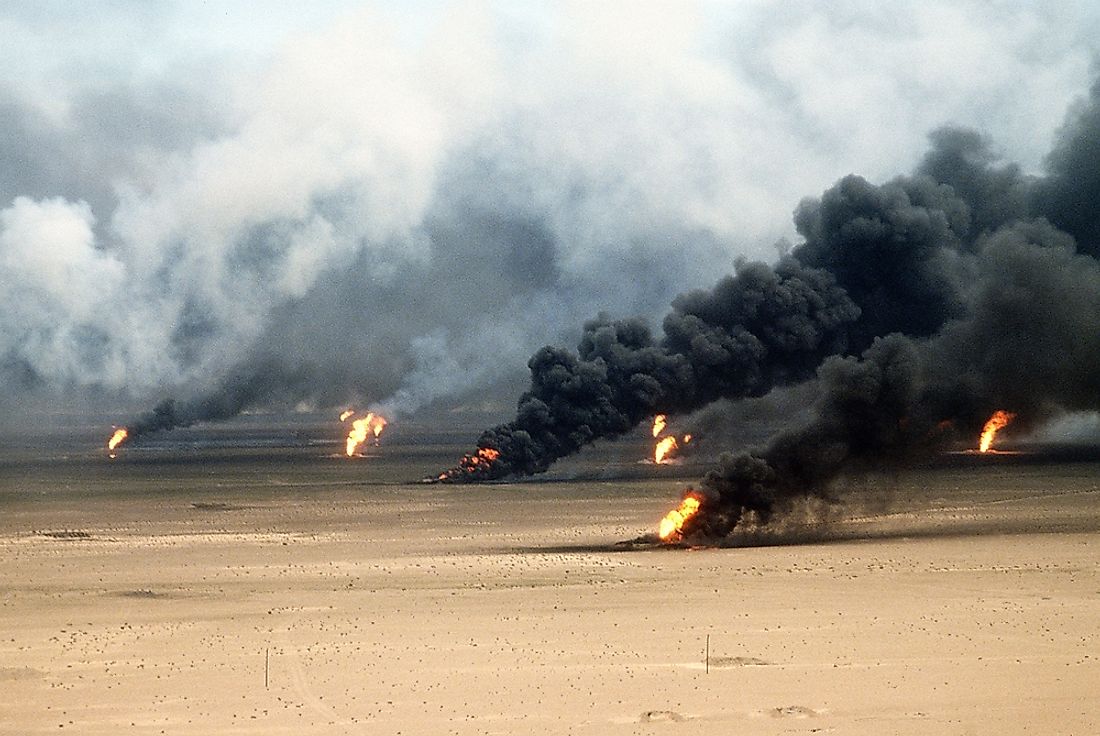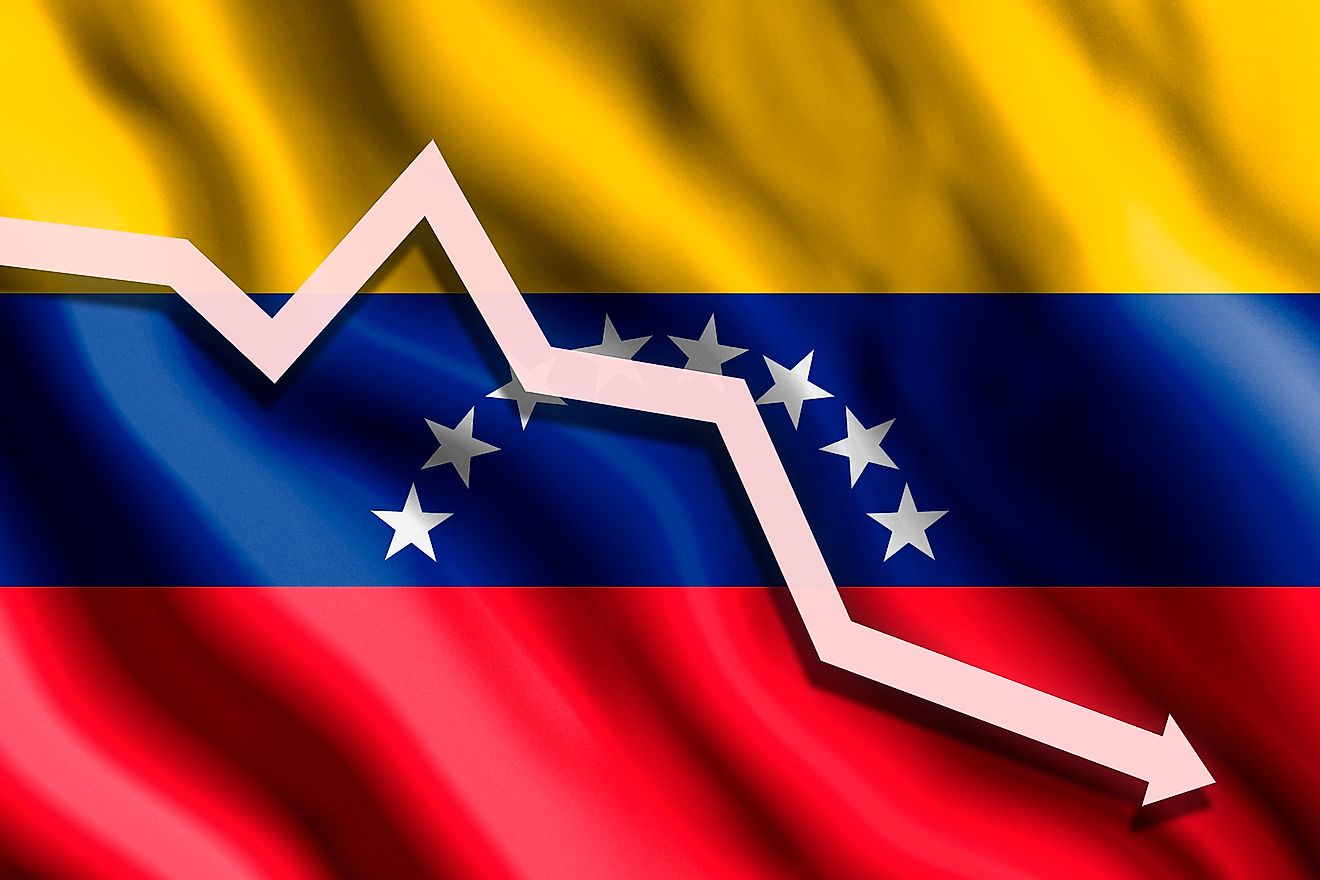Why Did Iraq Invade Kuwait In 1990?

The Invasion of Kuwait began on August 2, 1990 when Ba’athist-controlled Iraq moved troops into the Emirate of Kuwait. Two days after the Iraqi occupation began, the Kuwait Armed Forces were defeated and Saddam Hussein, the President of Iraq at that time, declared Kuwait as the 19th Province of Iraq. The conflict lasted for seven months.
Iraq-Kuwait Relations Before the Invasion
Kuwait became an independent nation in 1961, a move that the Iraqi government did not support. The country claimed that Kuwait had been created by British imperialism and that it was indeed, an extension of Iraq. Since Kuwait’s independence, Iraq had tried on several occasions to claim the nation as Iraqi territory. The Arab League prevented an invasion in 1961, however, in 1973, Iraq occupied an area along the border between the two countries. The government of Saudi Arabia opposed the invasion, and Iraqi forces were eventually withdrawn.
Between 1980 and 1988, Iraq was at war with Iran. For the first two years of the Iran-Iraq War, Kuwait was a neutral bystander. This was until fear that the Iranian Revolution would move within its borders forced the country to take sides. From 1982 until 1983, Kuwait provided financial support to Iraq despite violent retaliation from Iranian forces. In the end, the country’s financial contributions totaled around $14 billion. When Basra, a major port in Iraq, was destroyed, Kuwait provided access to ports as well.
At the end of the Iran-Iraq War, Iraq was unable to repay Kuwait and asked for loan forgiveness. The country claimed that the war had benefitted Kuwait as well. The government of Kuwait was unwilling to forgive the loan. Leaders from both countries met on several occasions during 1989, but never reached an agreement. Iraq-Kuwait relations became even more strained.
Allegations Leading Up To The Invasion
After the Iran-Iraq War had ended, the oil minister of Iraq suggested increasing oil prices as a means of paying off its war financing. Around the same time, Kuwait increased its oil production. With abundant oil supplies on the market, the price of oil from Iraq could not be increased. Consequently, the economy of Iraq continued to suffer. Iraq considered Kuwait’s refusal to reduce its oil production as an act of aggression.
This accusation of aggression was followed by the allegation that Kuwait was drilling for oil in the Rumaila field in Iraq. Iraq insisted that Kuwait had developed advanced drilling technique, capable of slant-drilling. According to Iraqi officials, Kuwait’s use of slant-drilling allowed the country to steal over $2.4 billion in oil. In 1989, Iraq demanded repayment for the lost oil. By July of 1990, Kuwait came to an agreement with the Organization of the Petroleum Exporting Countries (OPEC). Kuwait and the United Arab Emirates agreed to a decrease in oil production to 1.5 million barrels daily.
The Invasion
Despite the agreement to reduce oil production, tensions between the countries remained high. Iraqi troops were already stationed along the border. At 2 a.m. on August 2, 1990, Iraqi forces invaded Kuwait. In just a matter of hours, government leaders of Kuwait sought refuge in Saudi Arabia, Iraq gained control of Kuwait City, and an Iraqi provisional government was established. This military move gave Iraq control of 20% of the global oil supply. Additionally, Iraq now had access to a larger area along the Persian Gulf.
During the Iraqi occupation of Kuwait, its civilians formed an armed resistance movement. These individuals were detained, tortured, and killed. Some estimates suggest around 1,000 Kuwaiti civilians were killed. Around 400,000 Kuwaiti citizens, half the population, fled the country. They were joined by thousands of international foreign residents. The Indian government, for example, initiated a large-scale evacuation to remove over 170,000 Indian nationals via 488 flights over a 2-month period. The government of Iraq also led looting campaigns throughout Kuwait, stealing much of its wealth.
International Response
The United Nations Security Council (UNSC) immediately opposed the invasion and ordered Iraq to withdraw its troops. Iraq ignored the demand. Four days later, on August 6, 1990, the UNSC enacted an international trade ban with Iraq. The Iraqi government remained unphased, and by August 9, US forces began deploying to the Persian Gulf. Saddam Hussein responded by increasing troops in Kuwait to 300,000.
The UNSC established a deadline for the troop withdrawal on November 29. The resolution approved using force against Iraq if it did not remove troops by January 15, 1991.
Operation Desert Storm
On January 16, 1991, an international coalition, led primarily by US forces, began launching fighter jets into Baghdad, Iraq. Over the following six weeks, forces from 32 countries continued the air strikes against Iraq. The Iraqi military was unable to defend itself. Hussein responded by launching some missiles into Israel and Saudi Arabia. An on the ground invasion began on February 24. In one day, the allied forces defeated the majority of Iraqi forces, held approximately 10,000 Iraqi troops as prisoners, and established a US air base within the country. Four days later, Iraq removed its presence in Kuwait, and then-US President George Bush declared a cease-fire.
The Aftermath
On March 15, the Emir of Kuwait returned to the country after spending the entire occupation in exile. The UNSC passed a resolution on April 3 in order bring a formal end to the conflict. The resolution removed some economic sanctions on the country but left the ban on oil sales, requiring Hussein to destroy the country’s weapons of mass destruction with UN observation. Hussein accepted the terms of the resolution on three days later, although he went on to violate its conditions in later years.
Many lives were lost during the Invasion of Kuwait and Operation Desert Storm. In total, 148 US troops, 100 allied troops, and approximately 25,000 Iraqi troops were killed. An additional 457 US troops and 75,000 Iraqi troops were injured. Experts estimate that 100,000 Iraqi civilians died during Operation Desert Storm. Those Kuwaitis who could not leave the country reportedly suffered human rights violations at the hands of Iraqi officials. The invasion continues to negatively affect the health of the population.
In December of 2002, Saddam Hussein officially apologized for the Invasion of Kuwait. Ali Abdullah Saleh, the leader of Yemen who had supported the invasion, also apologized in 2004. The US has maintained a military presence in Kuwait. Some believe this presence offers protection to the country while others believe it is an example of Western imperialism.











